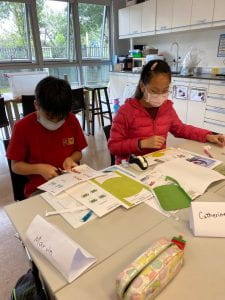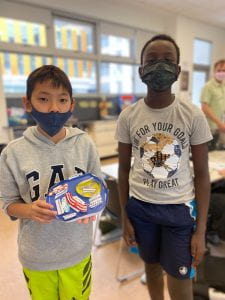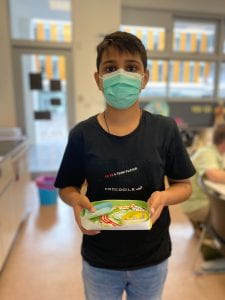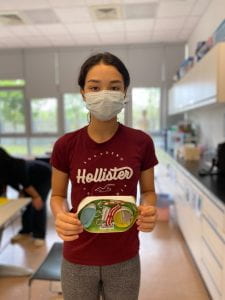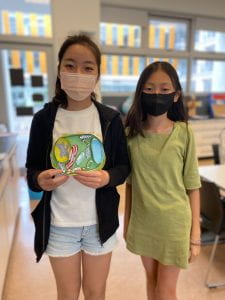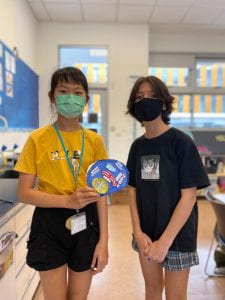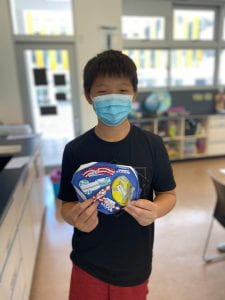In science, we are studying about cells and infectious diseases. Our statement of inquiry is: Understanding cellular systems and functions, allows humans to avoid the consequences of infectious diseases and prevent global pandemics.
Learning How to Use the Microscope
First, we learned all about the microscope. We studied the parts of a microscope and then we practiced how to use the microscope. We learned how important it is to start at the lowest level of magnification. You need to use the coarse adjustment knob to find the specimen and then use the fine adjustment knob to clearly focus the specimen. Always center your specimen before you move the objective lenses to the next level of magnification. Below are some photos of sixth-graders learning how to use the microscope
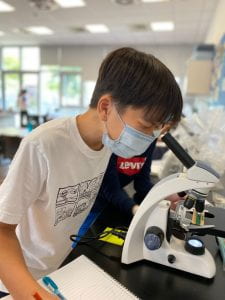
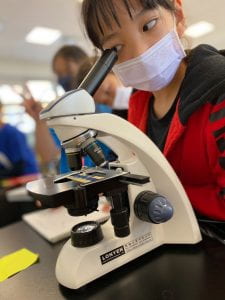
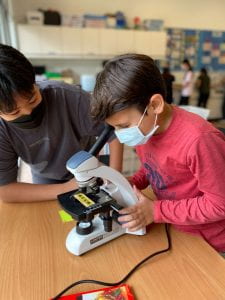
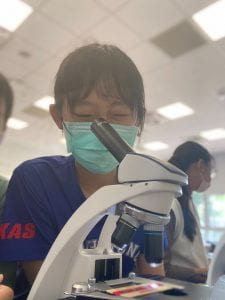
Plant Cells and Animal Cells
Next, we learned that there is a difference between plant cells and animal cells. We got to see different animal cells through the microscope such as brain cells, skin cells, and blood cells. We also learned how to make our own wet mounts and we made wet mounts of onion epidermis cells and elodea leaf cells. We were able to see the cell wall of these plant cells. We could also see the nucleus in the onion cells and the chloroplasts in the elodea leaf cells.
Model of a Cell
To help us understand that cells are made of different organelles that have different functions, we created models of plant and animal cells. Some students created plant cell models, while other students created animal cell models. Plant cells have a cell wall and chloroplasts while animal cells do not. Plant cells need the cell wall so that the plants can have structure. Also, the chloroplasts are responsible for photosynthesis – the process of turning water and carbon dioxide into oxygen and glucose (energy for the cell), but this only happens if the plant is in the sunlight. Below are some photos of students creating their cell models.
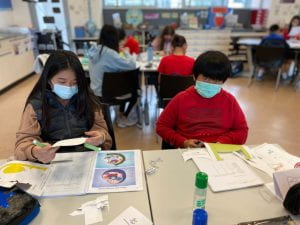 .
. 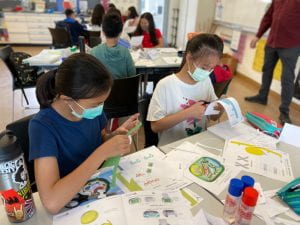 .
. 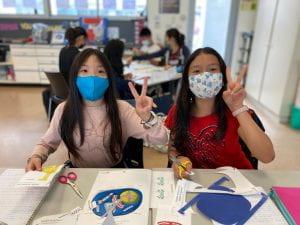

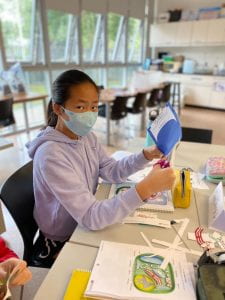 .
. 